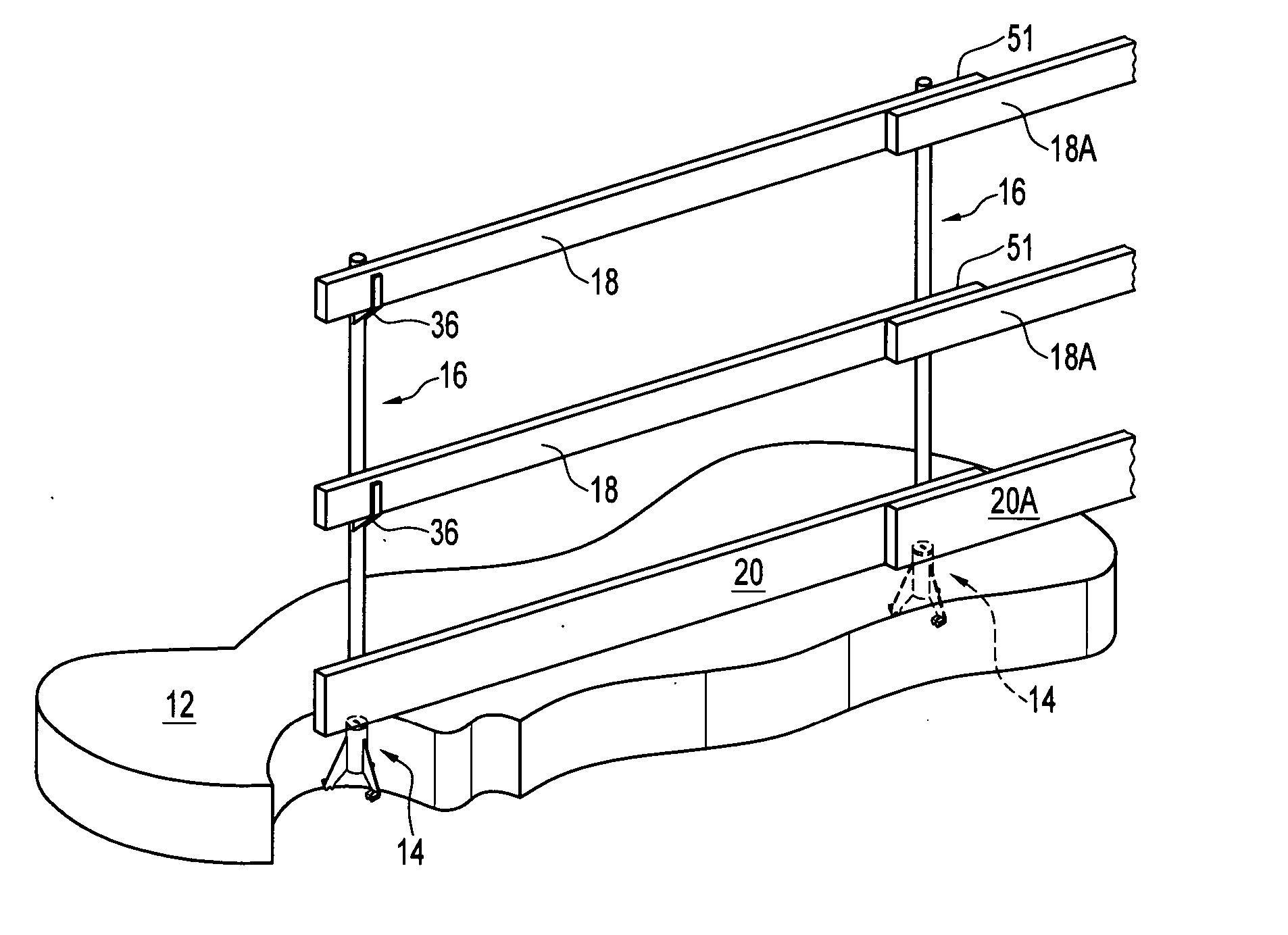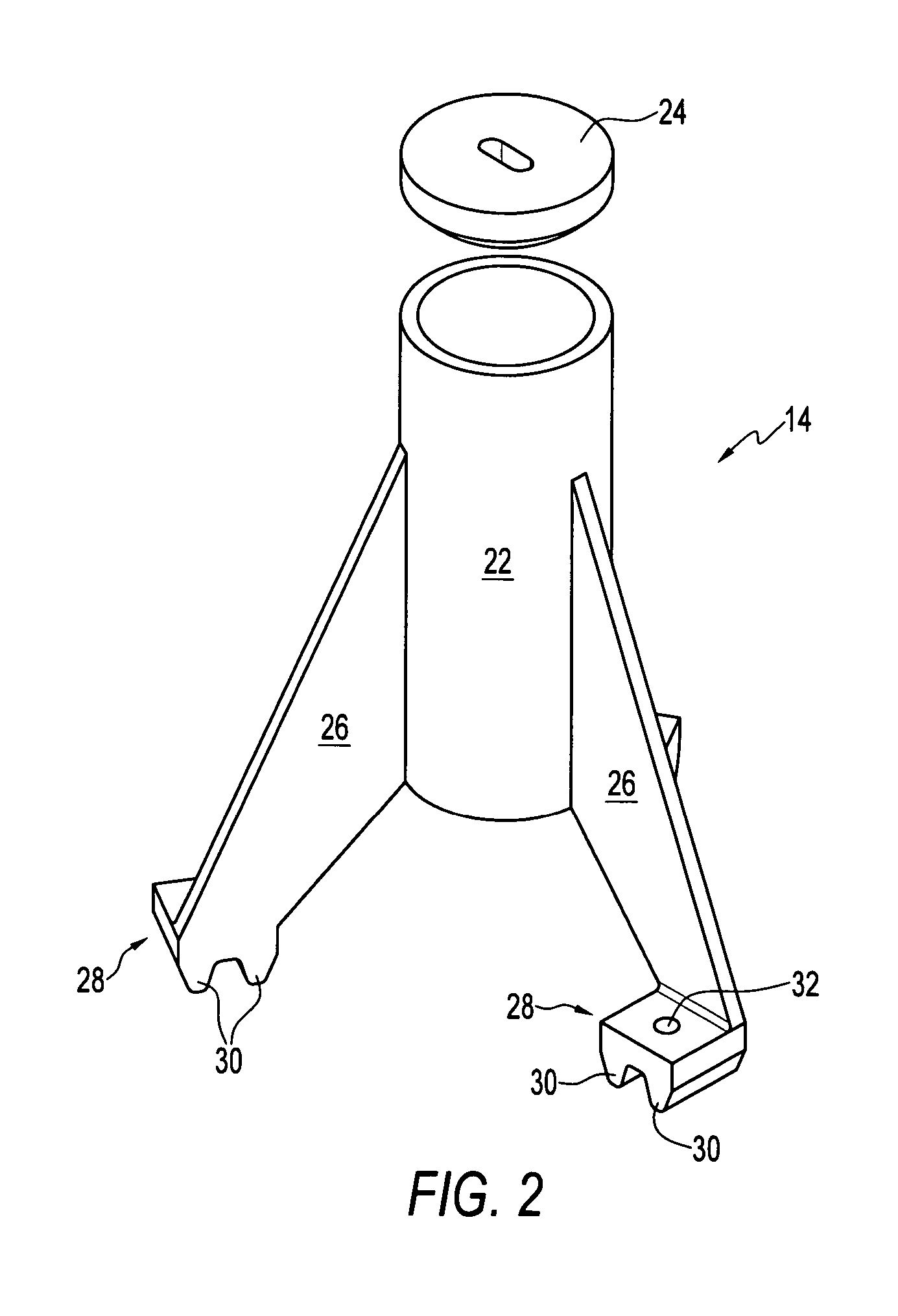Safety railing for building construction
- Summary
- Abstract
- Description
- Claims
- Application Information
AI Technical Summary
Benefits of technology
Problems solved by technology
Method used
Image
Examples
Embodiment Construction
[0031] In FIG. 1 of the accompanying drawings, there is shown a safety railing, indicated generally by reference 10, which is installed on a concrete floor 12. The safety railing 10 has post sockets, of which only one is shown in FIG. 1 and is indicated generally by reference numeral 14, posts indicated generally by reference numerals 16, and horizontal rails 18 supported on the posts 16. A lowermost rail, commonly referred to in the construction industry as a “kick rail”, is indicated by reference numeral 20 and supported on the concrete floor 12 by the posts 16.
[0032] One of the post supports 14 is illustrated in greater detail in FIGS. 2 through 4, and comprises an open-topped cylindrical post socket 22, with a circular lid 24 for closing the top of the cylindrical post socket 22.
[0033] The cylindrical post socket 22 is provided on a socket supports formed by three legs or support members in the form of flanges 26, which are equi-angularly spaced apart around the cylindrical po...
PUM
 Login to View More
Login to View More Abstract
Description
Claims
Application Information
 Login to View More
Login to View More - R&D
- Intellectual Property
- Life Sciences
- Materials
- Tech Scout
- Unparalleled Data Quality
- Higher Quality Content
- 60% Fewer Hallucinations
Browse by: Latest US Patents, China's latest patents, Technical Efficacy Thesaurus, Application Domain, Technology Topic, Popular Technical Reports.
© 2025 PatSnap. All rights reserved.Legal|Privacy policy|Modern Slavery Act Transparency Statement|Sitemap|About US| Contact US: help@patsnap.com



